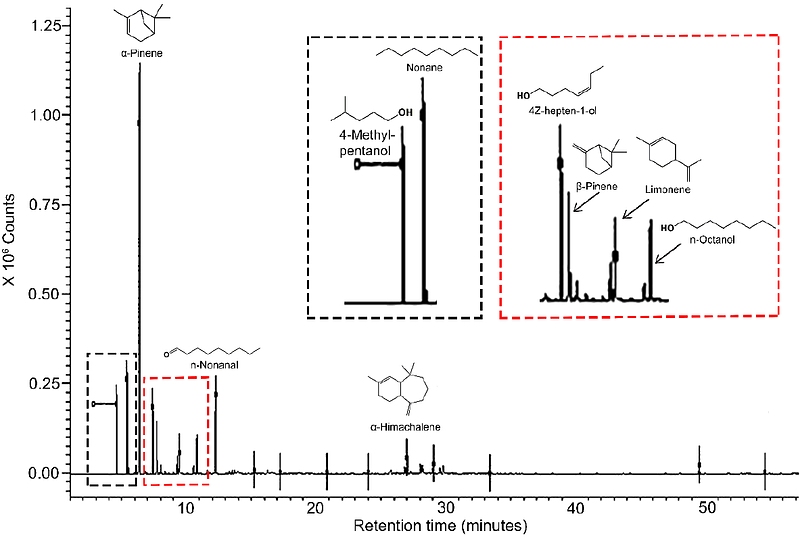Hypericum triquetrifolium Essential Oil: Chemical Composition, Hierarchical Cluster Analysis, and Antibacterial Activity

Hypericum triquetrifolium Essential Oil: Chemical Composition, Hierarchical Cluster Analysis, and Antibacterial Activity
El-Elimat, T.; El-Qaderi, H. S.; Hudaib, M.; Al Sharie, A. H.; Alekish, M. O.; Al-Gharaibeh, M.; Hananeh, W. M.
AbstractPlant species belonging to the genus Hypericum are well known for their profound pharmacological activities. This study evaluated the in vitro antibacterial activity and the chemical composition of the essential oil of Hypericum triquetrifolium Turra (Hypericaceae) collected from the northern part of Jordan. The aerial parts of H. triquetrifolium were subjected to hydrodistillation to obtain a yellowish essential oil with a yield of 0.023% (w/w of dried material). The chemical composition of the oil was explored using gas chromatography mass spectrometry (GCMS). Forty five compounds accounting for 99.5% of the oil composition were identified. The main classes identified were monoterpenes with 52.3% (49.6% as monoterpene hydrocarbons and 2.7% as oxygenated monoterpenes), aliphatic hydrocarbons 35.4%, and sesquiterpenes 11.8% (10.9% as sesquiterpene hydrocarbons and 0.9% as oxygenated sesquiterpenes). The oil was predominated by pinene (40.0%), which was identified as a chemotype for Jordanian H. triquetrifolium. Other major constituents included n nonanal (10.1%), nonane (9.0%), 4Z hepten 1 ol (5.8%), 4 methyl pentanol (5.1%), and {beta} pinene (4.6%). The antimicrobial activity of the oil was evaluated using a micro broth dilution assay against a set of Gram positive and Gram negative pathogens. The oil exhibited antimicrobial activity against the tested strains with minimum bactericidal concentration (MBC)/minimum inhibitory concentration (MIC) values of 12.5/6.25, 6.25/3.125, 6.25/3.125, and 3.125/1.56 g/L, respectively. Finally, Hierarchical Cluster Analysis of the essential oil composition of H. triquetrifolium from different geographical locations in the world identified the oil from Jordan to be more similar to those obtained from Italy, Greece, and Crete.